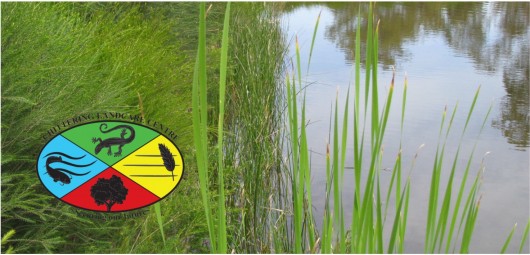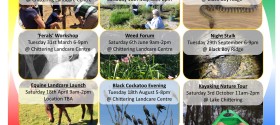Ellen Brockman Integrated Catchment Group
Committee Members (2021 – 2023)
| Richard Janes (Chair person) (Exec Committee) | Bullsbrook Landcare Group (NSLCDCC) |
| Errol Howard (Exec Committee) | Wannamal Lake Catchment Group |
| Doreen Mackie (Vice Chair)(Executive Committee) | Chittering Landcare Group (CVLCDC) |
| Samantha Young (Treasurer) | Community Member |
| Peter Adkins (or Proxy Amy Bassnett) | DBCA Parks and Wildlife, Rivers & Estuaries Branch |
| Robert Huston | DBCA Parks and Wildlife (Swan Region) |
| Brian Inglis | DBCA Parks and Wildlife (Perth) |
| Owen Donovan | DBCA Parks and Wildlife (Perth) |
| Cr Kylie Hughes | Shire of Chittering |
| Peter Stuart | Shire of Chittering |
| Brad Thompson | City of Swan |
| Kylie Bacon | Shire of Gingin |
| Luke McMillan | Perth NRM |
| Robert Howes | Community Member |
| Monique Bills | Community Member |
| Gabriele Maynard | Tronox |
| Rosanna Hindmarsh (Exec. Officer) | Community Member |
Meetings are held six time a year at 9am on a Monday morning at the Chittering Landcare Centre.
Meeting dates for 2024
History of the Ellen Brockman Integrated Catchment Group
The seeds of formation of the Ellen Brook Integrated Catchment Group, the forerunner to the Ellen Brockman Integrated Catchment Group occurred when the problems of the Ellen Brook were recognised in 1982 as the metropolitan water authority began assessment of the viability of the Ellen Brook as a source of water for the Perth metropolitan region. The Ellen Brook had a gauging station operating from 1965 and the increasing saline trend of the stream led to studies in 1985 to assess the Brooks flow and salinity. The objectives of the second stages of study were;
- to evaluate the present salinity level
- Predict future salinity levels in relation to identified catchment management options
- Recommend clearing controls or vegetation management strategies necessary to contain average salinities within limits of (i) 750 mg/L T.D.S.(ii) 600 mg/L T.D.S.
Further assessment of the waterway indicated that minimum annual phosphorous load in the years from 1987 – 1992 was 9 tonnes and the maximum was 43 tonnes (Average 26tonnes). Minimum nitrogen load in those same years was 41 tonnes and maximum was 119 tonnes. (Average 77 tonnes).
The nutrient problems indicated that rural land use was the major contributor to the high nutrient levels of the river and the problem began to be addressed by state agencies .. Wes Horwood an officer of the Swan River Trust was charged with the development of a group to act as “ the guiding body for the development of an Ellen Brook Catchment Plan which will be the structure which more detailed planning, research and other activities can fit into”. Wes made it clear at the first meeting that the role of the group would evolve but “the overall role will stay much the same – to work at coordinating activities within the Ellen Brook Catchment for a long term future for the environment and the community”.
Hartley Read, a councillor with the Shire of Chittering and the Chairman of the Chittering Valley LCDC, took the role of coordinator of the process to develop the group after a meeting with Wes and others at the Chittering Shire on November 9th, 1995.
A meeting was called on Monday 29th January 1996 at the Lower Chittering Hall – previously invitations had been extended to groups and individuals with an interest in the Ellen Brook. These included the councils of Swan, Chittering and Gingin, Tiwest, a mineral sands company with significant interests in the area and with a processing plant on the banks of the Ellen Brook, state agencies of Planning, Water , Agriculture, Conservation and Environment. and the Swan River Trust. Individuals representing the Chittering Valley LCDC, the Chittering Ratepayers and Ellenbrook Conservation Groups along with observers from universities who were also present.
Hartley Read was appointed Chairman of the group and the meeting resolved to have an issues paper within three months. The concept of a integrated catchment plan to manage the nutrient problems of the Brook was discussed and the necessity of coordinating all activities in the catchment including all state agency activity was seen as critical.
There was state government support for this group which was seen as crucial to resolving the problems of Ellen Brook and thus the Swan Canning Estuary. Through the Swan Avon Integrated Catchment Management Program – part of the Swan Canning Cleanup Program- funding to resource the long process of reversing the nutrient flow in Ellen Brook began.
By 1997 projects under the supervision of Gerry Parlevliet were underway – mostly fencing and revegetation of degraded streamlines. The fencing of the main channel of the Ellen Brook to prevent animals from entering the waterway had been seen as an important first step. Planting of streamlines on Bergalla Pastoral Company on July 26th and 27th of 1997 was undertaken with the support of Elders Pastoral Company.
The Shire of Chittering had applied for and received funding to employ a landcare officer an Ian Davis was appointed to assist landholders to fence and revegetate their streamlines. The Ellen Brook Integrated Catchment Group had received support for Secretarial and executive officer actions (undertaken by John Lambie, a local landholder) from the Swan River Trust for the first years of the operation of the group. It was felt to properly attend to the nutrient problems of the Brook and to develop the Catchment Management Plan a full time officer was needed and Damien Crilly was appointed as the first Ellen Brook Coordinator. The funding from this position was sourced from a number of agencies .
The Draft Management Plan for the Ellen Brook was delivered in 2000. The North East Corridor Strategy from the Western Australian Planning Commission informed much of the study with extensive assessment of the land capability of the Ellen Brook Catchment. (link to strategy). In 2000 the Australian Government organised a new method of distribution of Natural Heritage Trust Funds and natural resource management regions were formed around Australia. The Ellen Brockman Region became a sub region of the Swan Catchment Council (since named the Perth Region NRM) and funding for the AUSNISAP ( Avon Upper Swan Nutrient Intervention and Salinity Amelioration Program) was provided by the Australia Government. This project continued until a change of Government and a change of focus by the Rudd Government. The Ellen Brockman Integrated Catchment Group staff are now (2010) funded by a grant through the Perth Region NRM and through funding of a position by the Swan River Trust. The Shire of Chittering supports the activities of the group by provision of funds. Any work undertaken in the area is reliant upon officers employed by the group to seek grants to undertake protection, rehabilitation and restoration of the waterways. These grants come from many sources and include Lotteries West, Department of Environment and Swan Alcoa Landcare Program.






